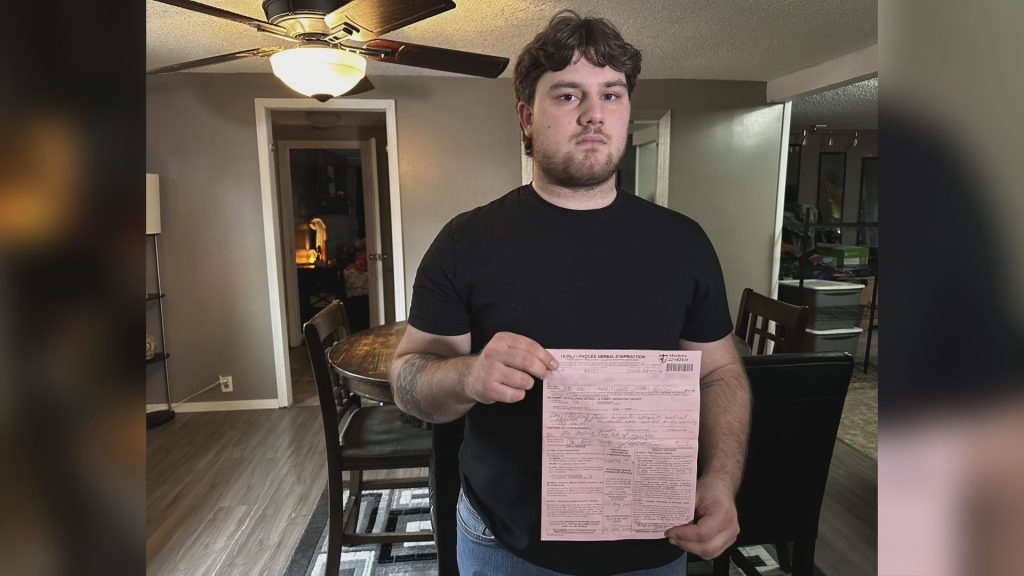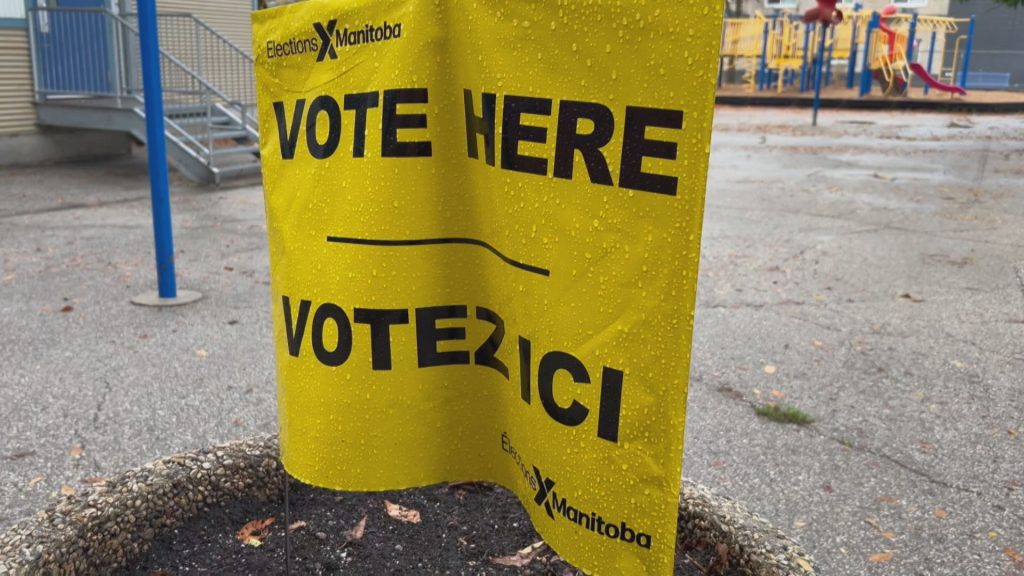Tina Fontaine remembered, one year after veridct
Posted February 21, 2019 5:26 pm.
Last Updated February 21, 2019 6:52 pm.
This article is more than 5 years old.
WINNIPEG – It has been one year since a jury found Raymond Cormier not guilty of second-degree murder in the death of Tina Fontaine.
On Feb. 22, 2018 when a jury read the verdict in court. After it was read, the crowd burst into tears as gasps.
WATCH: Verdict comes down in Fontaine case
The 15-year-old’s body was found wrapped in a duvet cover and weighed down by rocks, and pulled from the Red River eight days after she disappeared in 2014.
Tina was raised by her great-aunt, Thelma Favel, on the Sagkeeng First Nation, 120 kilometres northeast of Winnipeg. The teen left to visit her mother in Winnipeg at the end of June 2014 and became an exploited youth.
Favel called Manitoba Child and Family Services with concerns about Tina, who ran away repeatedly from a youth shelter and hotels where she was placed.
She was last seen leaving a downtown hotel, where she told a private contract worker employed by child welfare that she was going to a shopping centre to meet friends.
The jury heard how Tina and her boyfriend met the much-older Cormier that summer. The jury heard Cormier gave the couple a place to stay, as well as drugs.
Witnesses recalled Tina and Cormier fighting in the street over a stolen truck and Tina accusing him of selling her bike for drugs. Tina went so far as to report a stolen truck to police.
Witnesses testified that Cormier had a duvet cover similar to the one Tina was wrapped in.
Cormier was also recorded on tape during a police undercover sting telling a woman that he would make a bet that Tina was killed because he had sex with her and then “I found out she was 15 years old.”
There was no DNA evidence linking Cormier to the teen and doctors who were called to testify said they could not definitively say how she died.
READ MORE: Small things become scary, says Indigenous teen of Fontaine case, MMIWG
The defence argued that the Crown couldn’t prove that Tina didn’t die from a drug overdose or naturally in what Cormier’s lawyer called the “underbelly of the city.”
The acquittal sparked rallies of protest and support for Tina‘s family in cities across the country.
WATCH: Winnipeggers react to verdict in Fontaine case
The Crown in Manitoba decided it will not appeal Cormier’s acquittal.
WATCH: No public inquiry into Fontaine’s death
Jurors sat through three weeks of evidence at the trial.
Here is what the jury heard:
THE RELATIONSHIP BETWEEN TINA AND CORMIER
Court heard Tina had a happy childhood raised by a great-aunt on the Sagkeeng First Nation, but the girl began to spiral downward when her father was murdered in October 2011. Tina‘s mother, who had not been part of her life, re-emerged and Tina started going to Winnipeg to visit her. The girl ended up on the street and was being sexually exploited. Tina‘s boyfriend Cody Mason, who was 18 at the time, testified the pair first met Cormier earlier in the summer of 2014 and told him they didn’t have a place to stay. Cormier, who court heard was a methamphetamine and crack user, took them to a house with a basement. Known to some as Sebastian and to others as Frenchy, Cormier supplied Tina with the prescription drug gabapentin, said Mason, who added he and Tina would also drink and take marijuana and cocaine. Tina told a social worker that Cormier was a much older man who was going to get her a bike. Cormier told friends he had had sex with the 15-year-old. One witness, Sarah Holland, testified she once saw Cormier grope Tina while asking her to “just do me.”
—
THE PHYSICAL EVIDENCE
The cause of Tina‘s death was undetermined. Dr. Dennis Rhee testified that he found no definitive injuries on her body or to her internal organs. He said there was no evidence of a sexual assault, no signs of a stabbing or major blunt force trauma. It was estimated her body was in the river for three to seven days. There was no evidence that she drowned, but it couldn’t be ruled out. Christopher Keddy, who works at the RCMP forensics lab, testified that tests showed Tina‘s body had a level of alcohol slightly above the legal limit for driving. Keddy also said there was a relatively high level of THC – the active ingredient in marijuana. There was no indication of gabapentin, but Keddy said the test the RCMP lab ran might not detect low levels of the drug. Under cross-examination, the defence suggested it couldn’t be ruled out that gabapentin was in Tina‘s system at a potentially lethal level in combination with other drugs. There was no DNA evidence linking Cormier to Fontaine.
—
THE DUVET COVER
Three people connected to Cormier told police he owned the same type of duvet cover that was wrapped around Tina‘s body. DNA testing found no traces linking Cormier to the cover. Court heard police tried to find the source of the duvet cover. It was sold by Costco Canada and 864 had been shipped to the three Costco stores in Winnipeg. Police tracked down 100 people who had purchased covers with the same design to ask them whether they still had them. Under cross-examination, investigators acknowledged Costco had given away some of the unsold duvet covers, and police could not rule out whether similar ones had been purchased elsewhere and brought to Winnipeg.
—
THE ARGUMENT ON THE STREET
On Aug. 6, about two weeks before Tina‘s body was found and three days before she was reported missing, witnesses saw her arguing with Cormier in the street and heard Cormier mention something about a river. Holland testified that she heard Tina tell Cormier she was going to call the cops. The Crown argued that Cormier was worried that Tina was going to report that he had stolen a truck. Court heard an audio recording of Tina calling 911 to report a stolen truck. Witnesses also testified that Tina was angry that Cormier had sold her bike for drugs. Cormier acknowledged the argument in an interview with police and said he followed her down the street before turning in the other direction. He said that was the last time he saw her. He also suggested the suspect police should look for was a man who looked like singer Robert Plant and who was walking in the same direction as Tina that night. “Don’t focus on me,” he told police.
—
ERNIE DeWOLFE
DeWolfe met Cormier in prison and they stayed at the same halfway house for a time. DeWolfe testified he talked to Cormier on Aug. 15 and Cormier said he had met with Tina the previous day to ensure she was not going to call the police. “He just said that he had talked to her and he straightened it all out and took care of it,” DeWolfe testified. “I just presumed that he talked to her and … sorted it out.” Tina‘s body was found in the river on Aug. 17. In cross-examination, the defence suggested DeWolfe made the whole story up because he and Cormier had had an argument over money.
—
THE UNDERCOVER TAPES
Police launched a six-month undercover operation against Cormier called Project Styx. Cormier was placed in a bugged apartment for free and an undercover officer moved into a suite on the same floor. Cormier was recorded saying he’d bet the girl was killed because he found out she was only 15 years old. “I drew the line and that’s why she got killed,” he said. Cormier also told a woman that when he last talked to Tina, he told her to go jump off a bridge. At another point, he asked a woman if she had ever been “haunted by something” before he started to talk about Tina and boast that he beat two murders. During another recording, Cormier said during an argument with a woman that there was a little girl in a “grave someplace screaming at the top of her lungs for me to finish the job. And guess what? I finished the job.” Court also heard Cormier in a recording warning people in his apartment not to overdose or they would end up wrapped in a carpet and thrown in the river. In conversations with the undercover officer, Cormier said there were “three rules to crime: deny, deny deny.”
—
THE ARGUMENTS
Crown prosecutors contended that Cormier killed Tina, either by suffocation or drowning, because he found out she was only 15 and that would make him a pedophile. They said Cormier’s own words on the undercover tapes should be enough to convict him. The defence said that with no DNA evidence and no cause of death, there were too many holes in the case. It argued that Cormier felt guilt after learning that Tina was only 15 and he wanted to find the real killer.
WATCH: Anger erupts after verdict read
With files from The Canadian Press








